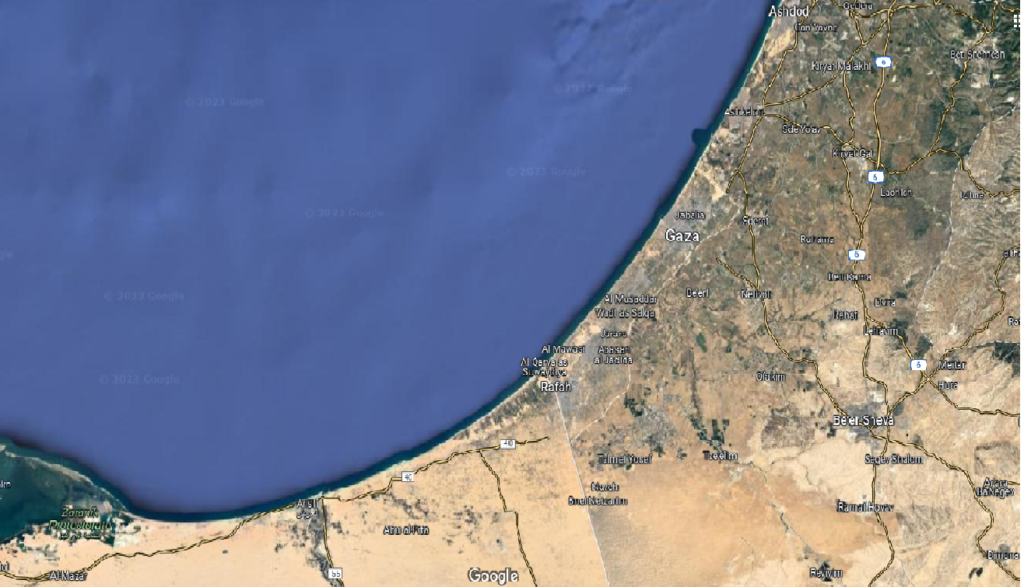Gaza Strip: A Trapped Territory Struggling for Freedom and Dignity

Introduction:
The Gaza Strip, a sliver of land on the eastern Mediterranean coast, has become synonymous with the protracted Israeli-Palestinian conflict. The geographical location, historical background, socio-political movements, and the prevailing conditions in Gaza paint a complex picture of a territory ensnared in a cycle of violence, blockade, and hardship.
Gaza Geography and Formation:
Nestled between Egypt to the southwest and Israel to the east and north, the Gaza Strip is a mere 25 miles long and 7.5 miles wide, making it one of the most densely populated areas globally. Its formation is intrinsically linked to the catastrophic events of 1948 when hundreds of thousands of Palestinians were forcibly expelled from their homes during the establishment of the state of Israel. The displaced found refuge in this narrow stretch of land, later known as the Gaza Strip.
Israeli Occupation and Control:
The aftermath of the Six-Day War in 1967 marked the beginning of Israeli occupation in Gaza, and with it, a tightening grip on the movement of goods and people. The imposition of stringent restrictions by land, air, and sea has persisted, enabling Israel to dictate the flow of essential resources. The harsh blockade, in place for over 16 years, grants Israel control over electricity, fuel, food, water, and medical supplies, profoundly impacting the daily lives of over 2 million Palestinians.
Historical Background and Movements:
Before the establishment of Israel, Gaza was an integral part of historic Palestine under Ottoman rule and later British occupation. The forced expulsion of Palestinians during the creation of Israel led to the concentration of refugees in Gaza. Out of this displacement arose movements such as Mujama al-Islamiya, a social charity funded partially by Israel, which played a significant role in providing essential services to the Palestinian population.
First and Second Intifadas:
The escalating tensions culminated in the First Intifada in 1987, marking widespread protests against Israeli occupation. During this period, Mujama al-Islamiya transformed into the militant group Hamas, which vehemently opposed Israel’s presence in Palestinian territories. The Oslo Peace Accords in the early ’90s failed to bring lasting peace, leading to the Second Intifada in 2000, further intensifying the conflict and imposing greater restrictions on movement.
Hamas and Political Landscape:
Hamas, initially formed during the First Intifada as a resistance movement, transitioned into a political party. Its popularity surged, leading to a significant victory in the 2006 elections. The power struggle between Hamas and Fatah, backed by the Palestinian Authority, escalated, culminating in Hamas taking full control of the Gaza Strip in 2007.
Gaza Blockade and Humanitarian Crisis:
Since 2007, Gaza Strip has been under a severe blockade, exacerbating an already dire situation. Israeli airstrikes targeted vital infrastructure, rendering 78% of the water undrinkable. Over 60% of the population is in dire need of food assistance, and daily life is marred by extensive power cuts lasting an average of 11 hours. The blockade, often referred to as a form of collective punishment, controls the import of essential items, including fuel, medicine, and food, subjecting the people of Gaza to unimaginable hardship.
Gaza Strip Earlier Situation and International Response:
As of 2022, Gaza remains a symbol of the ongoing Israeli-Palestinian conflict, with its residents trapped in a seemingly never-ending cycle of violence and deprivation. The international community has expressed concerns about the collective punishment imposed on the people of Gaza, highlighting the urgent need for a just and lasting solution that respects the rights and dignity of all parties involved.
Conclusion:
The Gaza Strip stands as a poignant reminder of the broader Israeli-Palestinian conflict’s complexities. The need for a comprehensive and equitable resolution, addressing the root causes of the conflict, is paramount to fostering lasting peace and stability in the region. Recognizing the suffering of the people of Gaza and advocating for a solution that upholds their rights and dignity is an ethical imperative for the international community. The tragic reality of Gaza Strip, a consequence of historical injustices and ongoing geopolitical struggles, underscores the urgency of finding a viable path towards a more hopeful and sustainable future.
| To Know More About other | Click here |
| To Go to home page click here | Click Here |
| Although we have tried to collect all information about his/her available at that time. We will always try to update it | |
